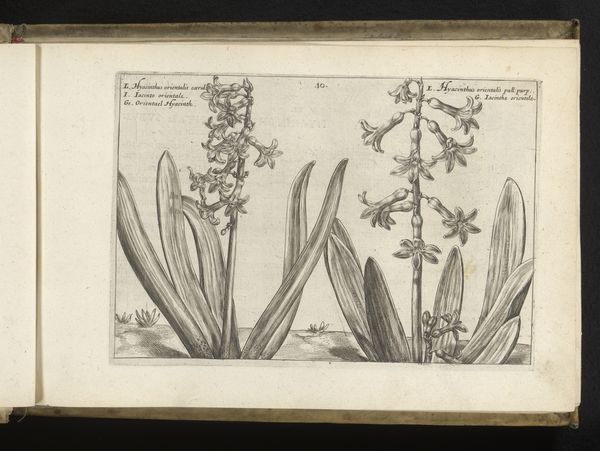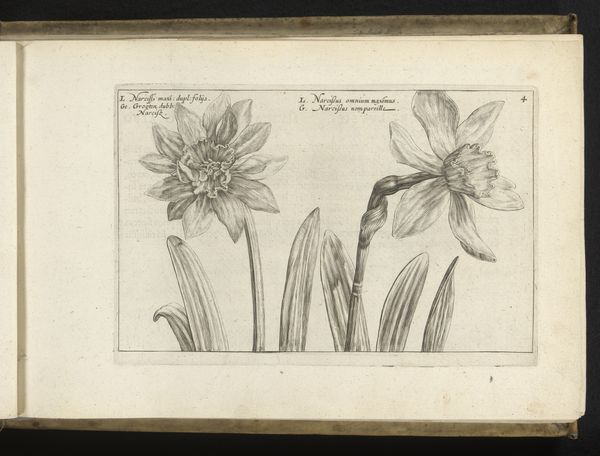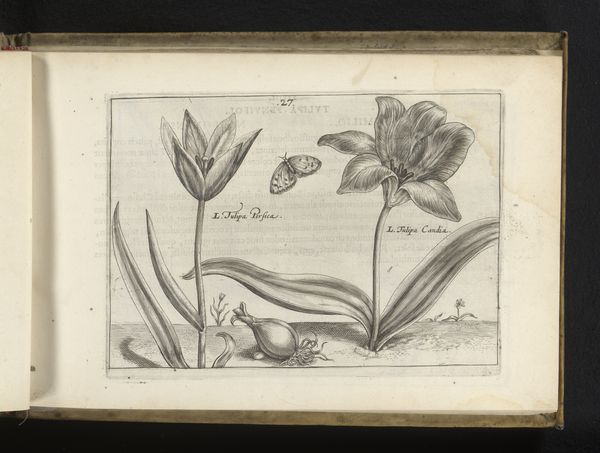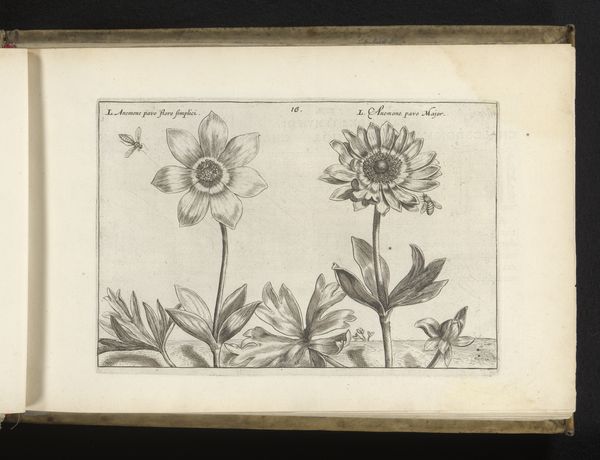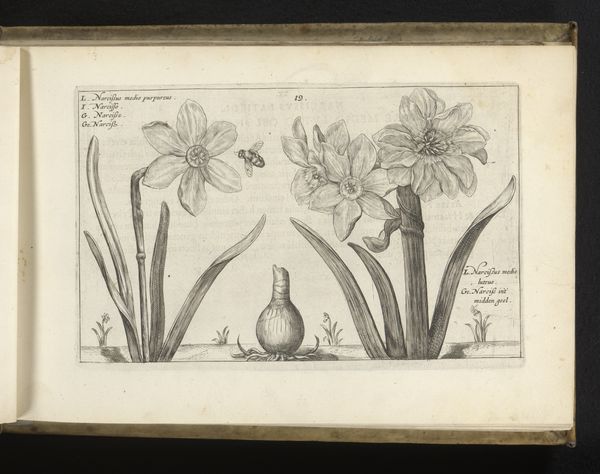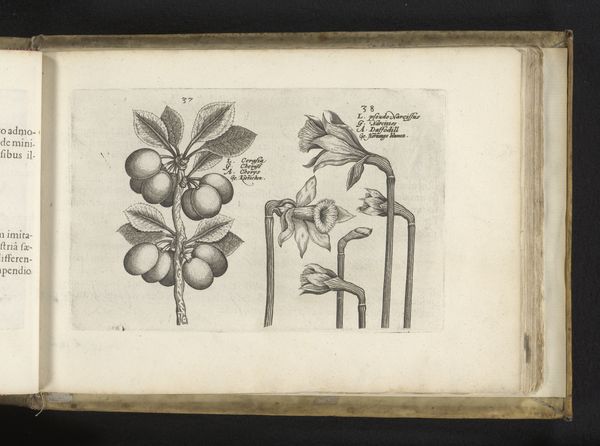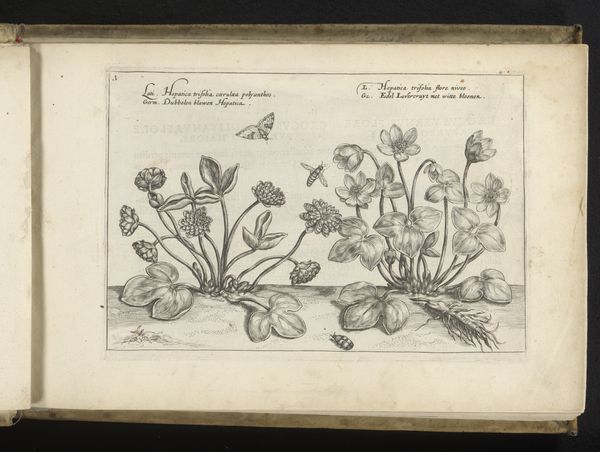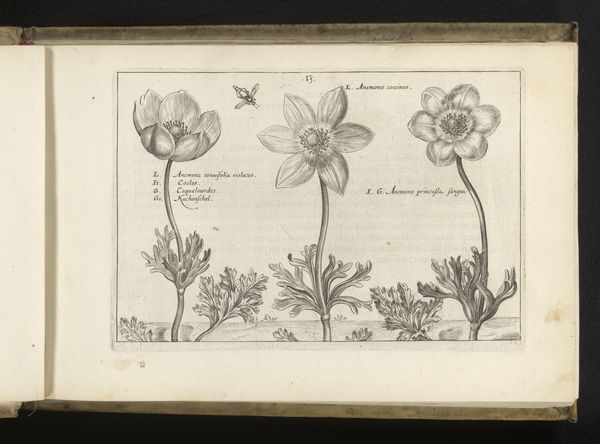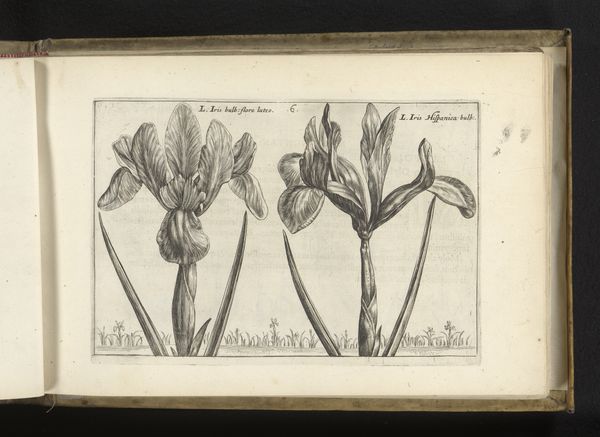
drawing, print, paper, ink, engraving
#
drawing
# print
#
flower
#
paper
#
ink
#
northern-renaissance
#
engraving
Dimensions: height 141 mm, width 220 mm
Copyright: Rijks Museum: Open Domain
Editor: Here we have "Twee soorten narcissen" – "Two Types of Daffodils" – by Crispijn van de Passe the Younger, created in 1617. It's an engraving, printed in ink on paper, currently held at the Rijksmuseum. I’m immediately drawn to the detail, especially considering it’s a print. What can you tell us about the making of this piece? Curator: Considering van de Passe’s work in the Northern Renaissance, the process becomes paramount. The labor involved in producing these precise lines through engraving reveals a dedication to craft, highlighting the economic value placed on accurate botanical illustration at the time. Think of the cultural need this addressed: the increasing fascination of a merchant class with luxury items such as new bulbs from the East! This image is not just aesthetically pleasing; it is tied to social trends, and material culture, all made manifest through the laborious engraving process. Editor: That’s fascinating. So, the act of creation mirrors the economic and social contexts of the era? Curator: Precisely. Engraving, unlike painting, allows for reproduction. What does this tell us about the intent of this kind of art, versus, say, a unique oil painting? Consider how the printmaking industry facilitated the spread of knowledge and fueled burgeoning capitalist markets. Editor: I guess it moves it away from just being an aesthetic object into something more functional and widely accessible. Did this democratizing element challenge older artistic norms? Curator: Yes! It shifted the understanding of “art” itself, opening a new avenue for distribution that intersected with emerging commercial networks and even scientific exchange. Each print, in turn, fueled consumer demand, establishing new roles for artists. Editor: This has made me see the image in a completely different light. I'd been focusing on the natural beauty, but the layers of material and cultural context you highlighted really broaden the picture. Curator: Exactly. Looking at the artwork through a material lens helps us examine its deeper purpose. It helps unveil hidden societal patterns within the work itself.
Comments
No comments
Be the first to comment and join the conversation on the ultimate creative platform.
